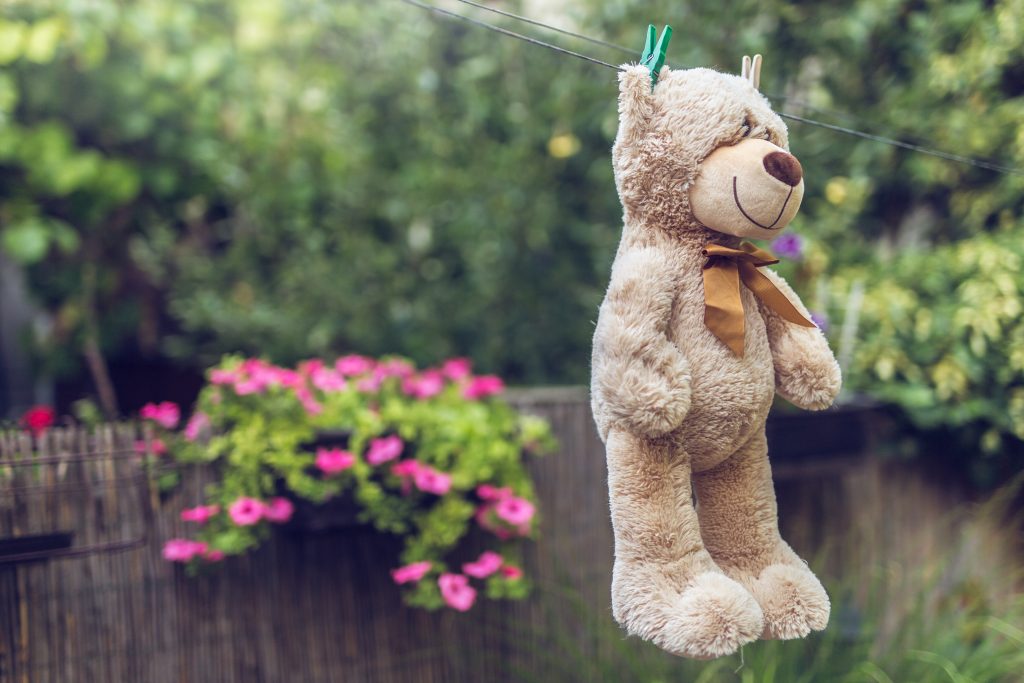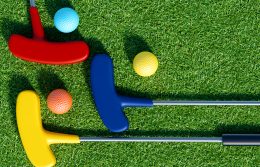How to Clean Your Child’s Toys
Let’s face it: Kids are little petri dishes of germs. As they explore and interact with their environments, they carry and transfer dirt and bacteria from one surface to another, increasing the likelihood of illness and infection. But you can mitigate the spread in your home by regularly cleaning and disinfecting your children’s toys. How to clean toys — and how often — depends on what the toy is made of and how it’s used. Here are the main categories:

Stuffed Animals
Like pillows and bedding, stuffed animals and plush toys should be washed after your child has been sick or regularly if your child sleeps with them. Don’t just toss them into the washing machine, though — you risk damaging a beloved companion if it isn’t sturdy enough. Start by checking for a label containing basic washing instructions (for example, “hand-wash only,” “surface clean only,” or “machine washable”).
If there are no instructions on how to clean the toy, or if it is especially old or in rough condition, start with the gentlest option: hand-washing. Submerge the stuffed animal in cold water, add a bit of gentle detergent, carefully massage the detergent into the body of the animal, and rinse it under cold running water. Even if its tag indicates that a stuffed toy can be machine washed, play it safe by choosing a hand-wash or delicate setting. Allow the toy to air-dry to help it keep its shape and prevent the stuffing from clumping.

Plastic Toys
Viruses can live on nonporous plastic surfaces for up to several days, and some pathogens can survive for weeks or even months. It’s essential to disinfect plastic toys regularly, especially if you have a younger child who likes to put toys in their mouth!
Fortunately, cleaning plastic is usually pretty simple. Sturdy plastic toys can be sterilized in the top rack of a dishwasher. (Don’t try this with thin, flimsy plastic.) You can also spray or wipe down toys with a disinfecting solution. Dry thoroughly to remove any moisture from small crevices. Cleaning wipes are a quick and easy way to clean toys between play sessions. Opt for a natural cleaning solution when possible to avoid the accidental ingestion of harmful chemicals.

Bath Toys
Most bath toys contain a hole that allows water to be drawn into them, but they never fully empty. Retained water inside soft plastic, microorganisms from tap water, and germs from the bather are a recipe for mold and mildew. It may not be visible, but virtually all bath toys have some sort of microbial growth inside them.
Frankly, the easiest course of action is to avoid bath toys altogether. If that doesn’t work for your family, try to stick to hard plastic toys with no holes. If you absolutely must keep bath toys that squirt water, consider using a hot glue gun to seal off the hole before getting it wet. Prevent microbial growth by regularly cleaning soft plastic bath toys with bleach or vinegar (not both!) and storing them in a dry place. Throw away anything with visible mold.

Electronics
Obviously, electronic toys can’t be scrubbed down in a sink. But they still need to be cleaned regularly; these are some of the most-touched surfaces in a home. For anything containing batteries, wiring, screens, etc., disinfecting or alcohol wipes are your best friends. Always start by disconnecting any power sources and removing batteries. Screens should be gently cleaned with a clean microfiber cloth. If necessary, apply a small amount of cleaning spray to the cloth (never directly spraying the screen itself) and use that to wipe the screen. Ensure everything has completely dried before reconnecting the power or replacing the batteries.
Cleaning and disinfecting your child’s toys are important tasks for their health — and yours, too, if you don’t want to pick up every cold they bring home from preschool.
Incorporate toy cleaning into your regular routine, and your immune system will thank you.
© 2024 Texas Farm Bureau Insurance



